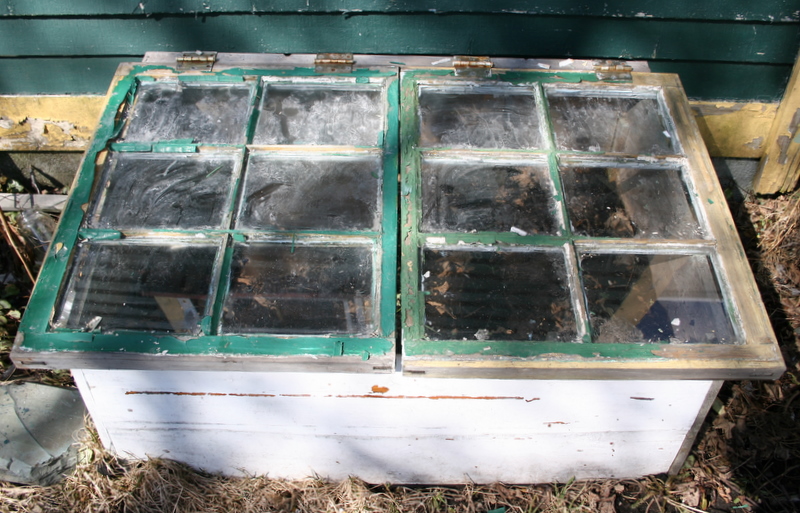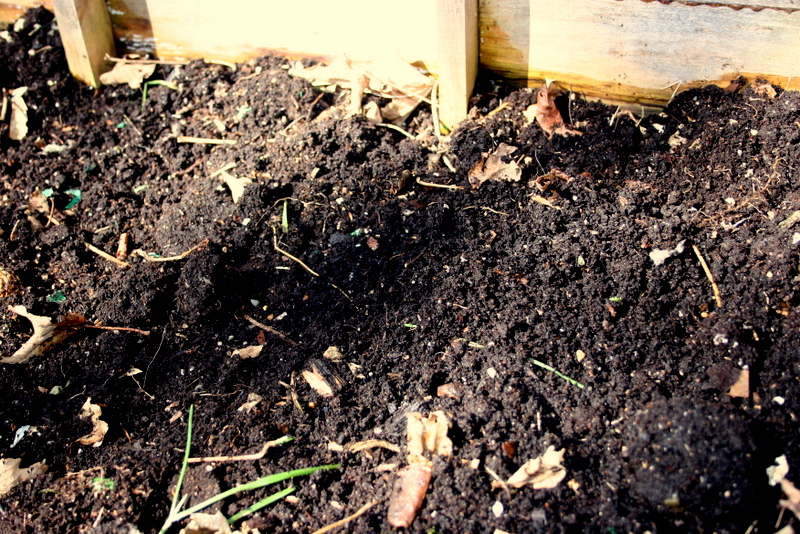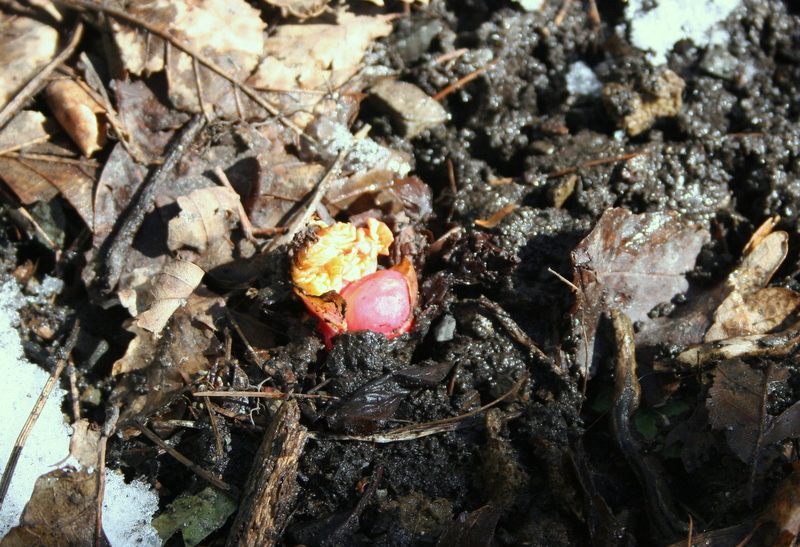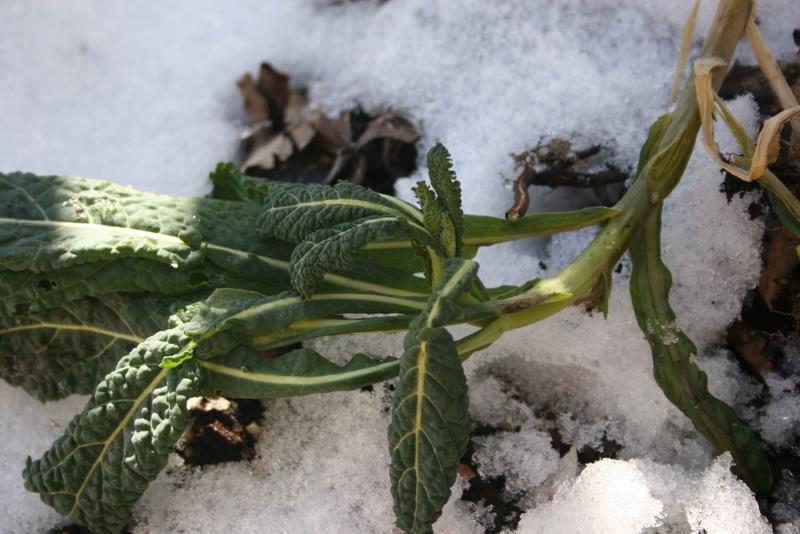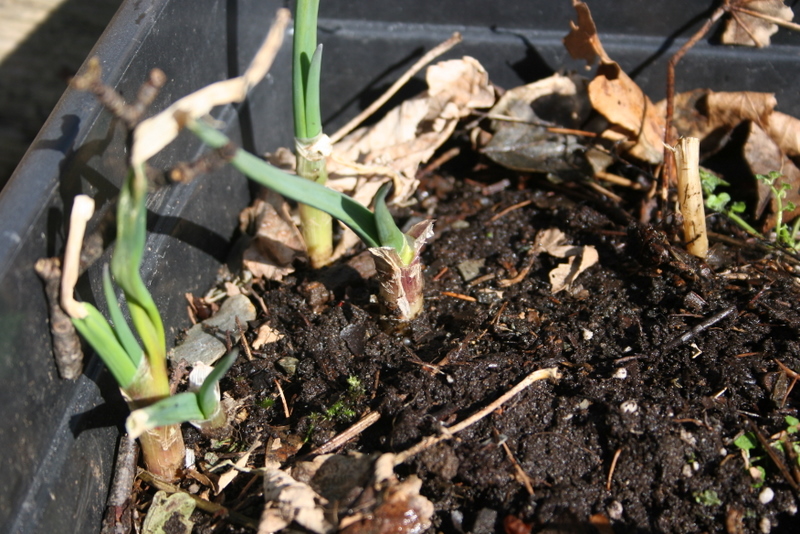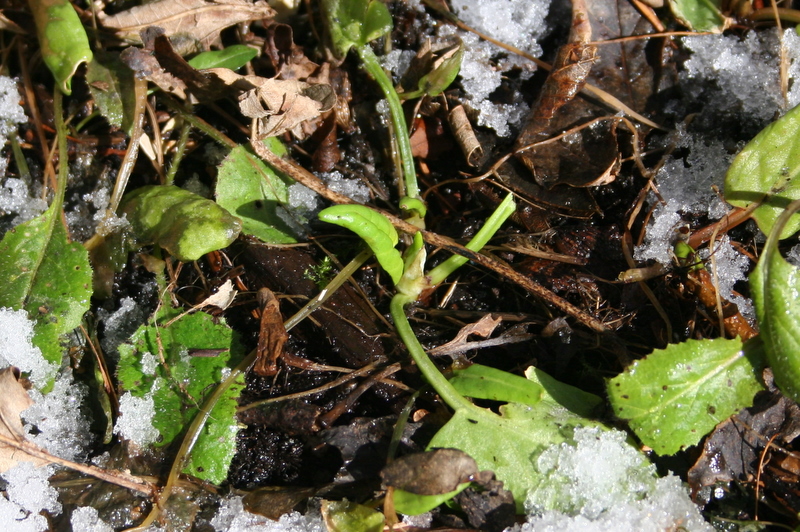If you're interested in foraging, we recommend that you pick up several local guidebooks and take them with you each time you collect edible wild plants. Here are some RCR recommendations for books to take out on the trail.
Calling all seed savers: Take the survey!
Canadian gardeners– this first survey is for you! Do the survey and turn 30 minutes of your time into generations of good food in Canada. USC Canada aims to lay the foundation for a more secure and diverse seed system in Canada.
Tasty, tasty tubers!
Some of you may remember my tale from a couple weeks back about how my one-year-challenge to eat something I had grown or foraged every day for a full year was a total failure, due to my having been hijacked by hormones through the fall and winter. Since then I've been back on track, eating delicious sprouts and microgreens, which I have been tending lovingly in their jars and recycled containers that deck my windowsills. I've sown some seeds for spring and summer vegetables. I've been snipping and clipping from my potted rosemary, lemon thyme, and sage plants, and in no time at all I'll be gathering teapots of mint and lemon balm from the weedy recesses of the back yard. One other plant has emerged to help me get through a few days of homegrown eats, too: the knobbly, delicious Jerusalem artichoke.
If you've never eaten a Jerusalem artichoke, you're certainly not alone. I've never seen them in a grocery store in Newfoundland, and only a handful of local farms grow them. I first ate them in Montreal when I lived there, and only in restaurants, so I had never cooked them myself until this week, when I dug them up from the frosty dirt where they had been hiding out since last fall.
Jerusalem artichokes aren't really artichokes: they're sunflowers, native to the eastern part of North America, where they were a staple food long before the Europeans showed up and took them back with them as novel delicacies. There is a lot of lore around the name, and the accepted explanation is that the "Jerusalem" bit comes from the Italian girasole, which means "sunflower," and that the "artichoke" bit comes from French explorer Samuel de Champlain's description of the tuber's flavour as being like an artichoke, although, frankly, I don't get the similarity.
So what do they taste like? Sweet, nutty, crunchy when raw (really crunchy, like, water chestnut crunchy), potato-y when cooked (although they tend to go mushy very quickly when boiled, so steaming, roasting, and pan-frying are recommended). They're really very yummy.
There are two caveats to growing Jerusalem artichokes. The first is that they are notoriously invasive, so you might not want to plant them directly in the ground. Apparently, even the smallest bit of tuber left behind will sprout again, which is all fine and good if you have the time and energy and wherewithal to dig them up year after year until the end of time, but if you move, the next people to inhabit your garden might be less than impressed. The second is that Jerusalem artichokes are sunflowers, and sunflowers can suck a lot of lead out of your soil, so if you live in an area with dodgy dirt, you might want to grow them in a container. I tried to come up with some kind of cool planter option last year, but as the spring crept on I ran out of time, and just flung a bag of soil on the ground, cut a big hole in the top and some drainage holes around the bottom, and stuck my seed tubers down in it. The yield wasn't huge, but since I had them in close quarters, in a shady spot, during the most miserable summer in recent memory, I'm impressed they did anything at all, really. This year, my husband and I are going to dig a trench for them and line it with something they can't get out of, in an area of the yard where they'll get more sunlight, and where they'll have a bit more space to spread their roots.
Oh, there's a caveat to eating them, too: apparently some people have a hard time digesting them, and thus the tubers have earned the nickname "fartichokes." Ahem. Now, I can report that I have had no such reaction, and I am very happy about that. British garden writer Alys Fowler solves the wind problem by cooking her Jerusalem artichokes with winter savory. I may have escaped a gassy fate through my negligence: I've read that leaving them in the ground for a hard frost or two helps them convert the troubling carbs, making digestion easier. A full winter of freeze and thaw seems to have sorted them out nicely.
Jerusalem artichokes can grow quite tall - over 20 feet in warmer climes, but easily six or eight feet here. Mine didn't flower last year (no sun, no sunflowers), but the flowers are cheerful and yellow when they do appear. They attract all kinds of helpful insect friends. They're so pretty, actually, that Monet painted them. The variety I grew is called Passamaquoddy Potatoes from Hope Seeds, but unfortunately they're not available this year. If you can get your hands on some Jerusalem artichokes from a local grower, I suggest you toss a few in some good soil and see what happens. Come springtime, you may well be thanking yourself.
The garden that lived
I had high hopes for my fall and winter garden. Last summer I surrounded myself with books telling me how to extend the season and eat fresh through the year. I was ready to wrap my whole yard in greenhouse plastic and eat kale quiche all winter long. Alas, dear readers, it was not to be. In September I started feeling super run-down. Around October I started feeling downright woozy. By Thanksgiving I had figured out that I was (and am!) pregnant. Between wrangling three children and gestating a fourth, gardening, even the easy indoor stuff like sprouting, took the back burner.
But it doesn't take much for a gardener to spring back to life. A little sunshine and a bit of inspiration were all I needed. Last Saturday - a glorious, if cold, March day - I attended a discussion on urban farming, organized by the local Slow Foods group. During the talk, someone asked when the speaker planned to start his greens. His reply? They were already growing! He had a greenhouse, and he had lettuce growing away in there, under an upturned aquarium. His wife and co-gardener added that if it's warm enough for weeds to grow, it's warm enough to plant spinach.
Well. That was all it took. Yesterday, when the sun was out, I braved the remaining snow in the back yard and cracked open my neglected cold frame. You know what was in it? Dandelions. Growing. And grass, also growing, and a somewhat floppy but clearly still alive calendula. The top surface of the soil was a little frosty, and the soil around one edge was frozen pretty solid, but after a little bit of stabbing with my trowel, I had nice, loose soil that I could pick most of the weeds out of.
Lest you think my cold frame is some kind of fancy-pants set-up, here's a picture. It's ugly.
Pretty shabby, hey? The body of the cold frame is an old wooden dresser we got from Freecycle, and which, after a couple years of use, was in bad shape. My husband took out all the drawers and supports, and laid the whole thing on its back, then cut it down at an angle so it would make the most of the sunlight. The windows are from Power's Salvage in St. John's, and the hinges are either from Power's, or were in our basement when we bought the house. We have it facing south-west, so it gets sunlight through most of the day. It's great.
This is what the soil inside looks like:
It's not exactly warm, but it's definitely not frozen. There aren't any ice crystals, even. So I did what any sensible gardener would do: I planted some seeds. Nothing fussy, just some spinach, arugula, and radicchio. All three of those are cold-hardy greens, and they germinate at relatively low temperatures. They are also last year's seeds (I think the radicchio is from two years ago), so the germination rate might not be great, but I'll take what I can get. I wouldn't risk putting any delicate plants in the cold frame this early (the peppers, squash, eggplants, and tomatoes will have to wait), but for sturdy greens, it should be just fine.
Today, even more of the snow has melted from my yard, so I decided to have a poke around and see what plants survived the winter. It's pretty amazing. I have lavender, sage, and thyme still green under the snow, and loads of vegetables growing as if winter had never happened!
It felt so good to be able to scratch, sniff, and nibble my way through the yard, in the sunshine. I know better than to trust that spring might already be here - it is, of course, only March, and our average last frost date in St. John's isn't until June 2. Still, a sneak peek at what is waiting for me once the rest of the snow melts is pretty exciting.
Did anything survive the winter in your garden?












